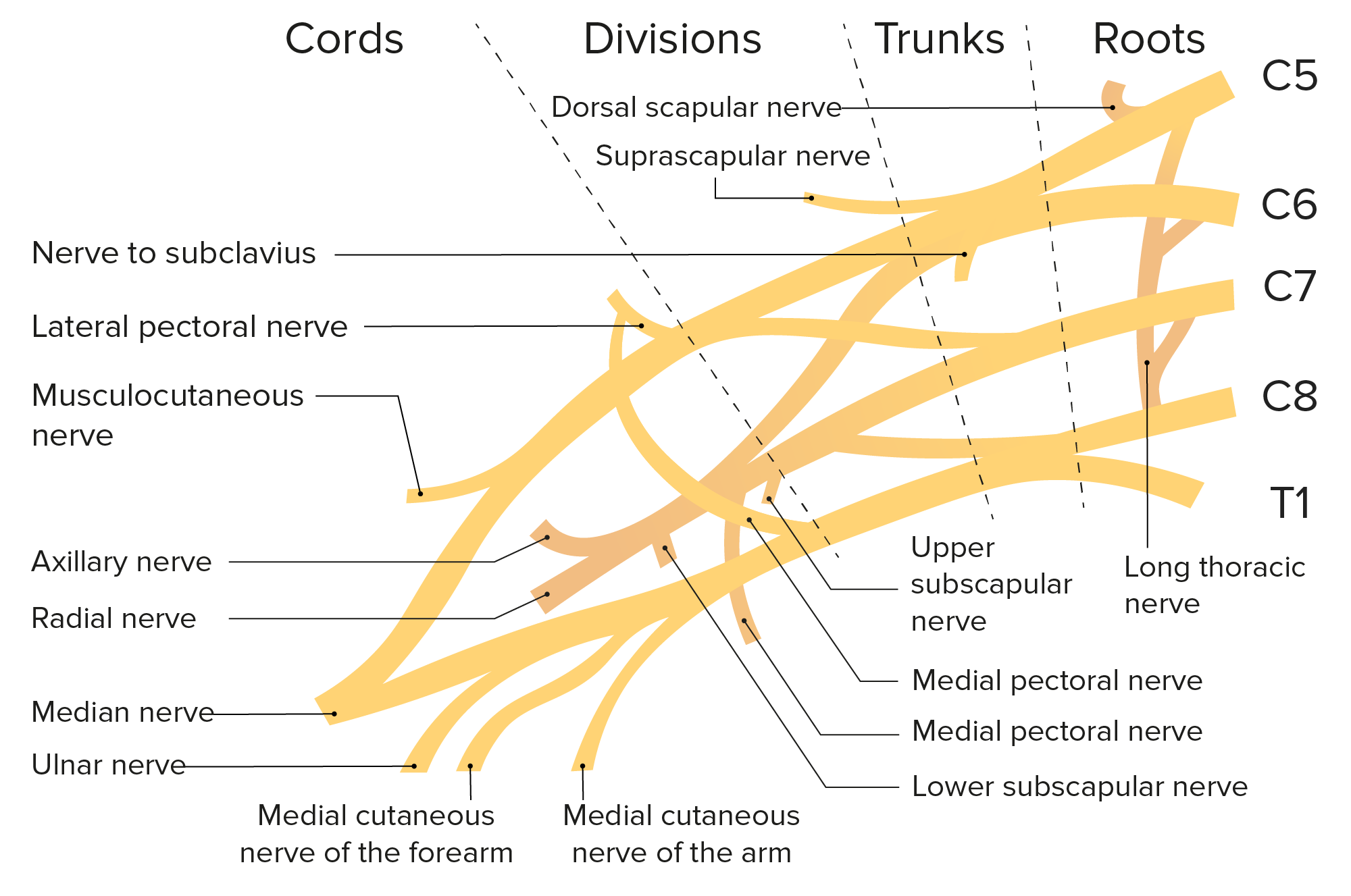Playlist
Show Playlist
Hide Playlist
Mononeuropathy
-
Slides 06 MononeuritisMultiplex Neuropathology II.pdf
-
Reference List Pathology.pdf
-
Download Lecture Overview
00:01 Here, we’ll take a look at mononeuritis multiplex. 00:05 Mono neuritis. 00:06 Multiplex is a painful, asymmetrical, peripheral neuropathy, affecting at least two areas on the same nerve. 00:13 It is important to be aware that nerves throughout the body can be affected. 00:19 Possible etiologies: diabetes, or vasculitides with or without connective tissue disease or infection related. 00:30 Maybe it’s hepatitis B virus, HIV, hepatitis C virus. 00:34 And one that you should know quite well is that polyarteritis nodosa may also present with mononeuritis multiplex. 00:45 Other causes including leprosy, Lyme disease, sarcoidosis, or hereditary neuropathy with liability to pressure palsies, all possible causes of one nerve being affected in multiple locations. 01:01 Let’s have a view on the clinical presentation of mononeuritis multiplex. 01:05 This is a patterned involvement of a single nerve at multiple sites. 01:09 This could be sequential or simultaneous. This is in contrast to polyneuropathy. 01:15 Its clinical presentation shows involvement of multiple nerves at the site. 01:20 For a diagnostic workup you use EMG nerve conduction velocity tests to confirm neuropathy. 01:25 Besides this you should use an etiology-specific diagnostic workup based on other associated symptoms to identify the cause.The treatment depends on the identification of the etiology. 01:38 For instance, immunomodulation therapy for necrotizing vasculitides as a cause of mononeuritis multiplex is associated with significant motor and sensory improvement. Anti-convulsants can be used to help with neuropathic pain. Corticosteroids are helpful in some cases. 01:56 In summary: Risk factors: Diabetes, family history. 02:02 Preventative medicine: Well, good control of blood sugar if you’re suspecting diabetes because there’s every possibility that you have many nerves that might be affected. 02:10 Signs and symptoms: Well, it depends on which nerve has been affected. 02:15 For example, if it’s a nerve down in the leg, then it’s common peroneal. 02:18 You might have – A patient experiences foot drop or maybe it’s radial nerve also being affected. 02:27 So therefore, there’s wrist drop, same patient, multiple nerves -- – or excuse me, multiple locations. 02:34 One nerve in each location being affected. 02:37 Diagnostic workup: EMG, electromyogram, appropriate labs. 02:42 And treatment here would be, well, etiology-specific.
About the Lecture
The lecture Mononeuropathy by Carlo Raj, MD is from the course Other Diseases: Hydrocephalus, Neuromuscular Disease, Plexopathy, and Mononeuritis.
Included Quiz Questions
A patient presents to you with the inability to dorsiflex his right foot. There is loss of sensation in the lower lateral aspect of the leg. Which of the following nerves is most likely damaged?
- Common peroneal nerve
- Femoral nerve
- Superior gluteal nerve
- Inferior gluteal nerve
- Obturator nerve
Which of the following diagnostic tools is used for evaluating and recording the electrical activity produced by skeletal muscles?
- Electromyography
- Electrocardiography
- Magnetic resonance imaging
- Computed tomography scan
- Electroencephalography
Customer reviews
5,0 of 5 stars
| 5 Stars |
|
1 |
| 4 Stars |
|
0 |
| 3 Stars |
|
0 |
| 2 Stars |
|
0 |
| 1 Star |
|
0 |
Dr. Raj is quite interesting during lectures he makes information easy to integrate and remember it. Thank you, Dr. Raj.




